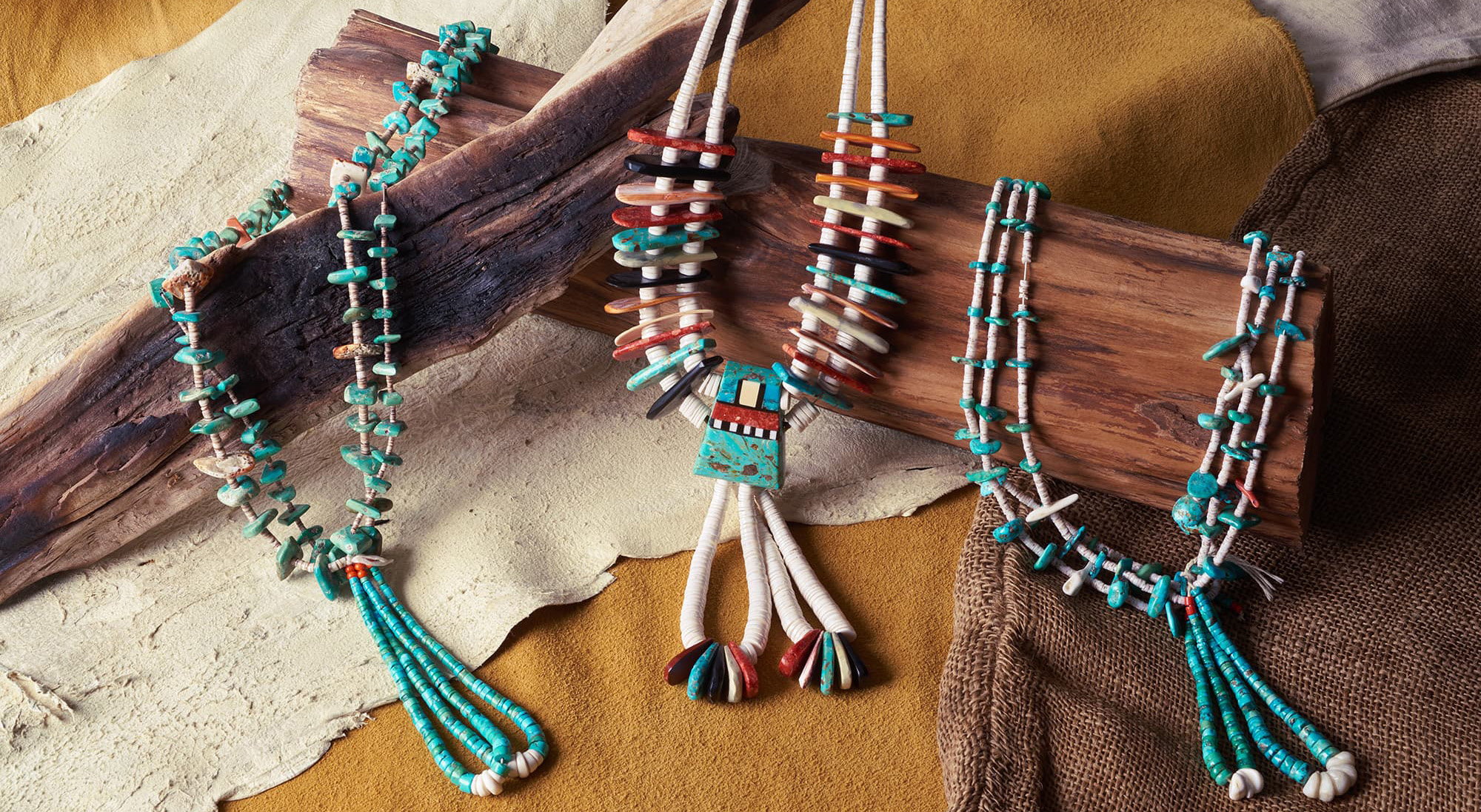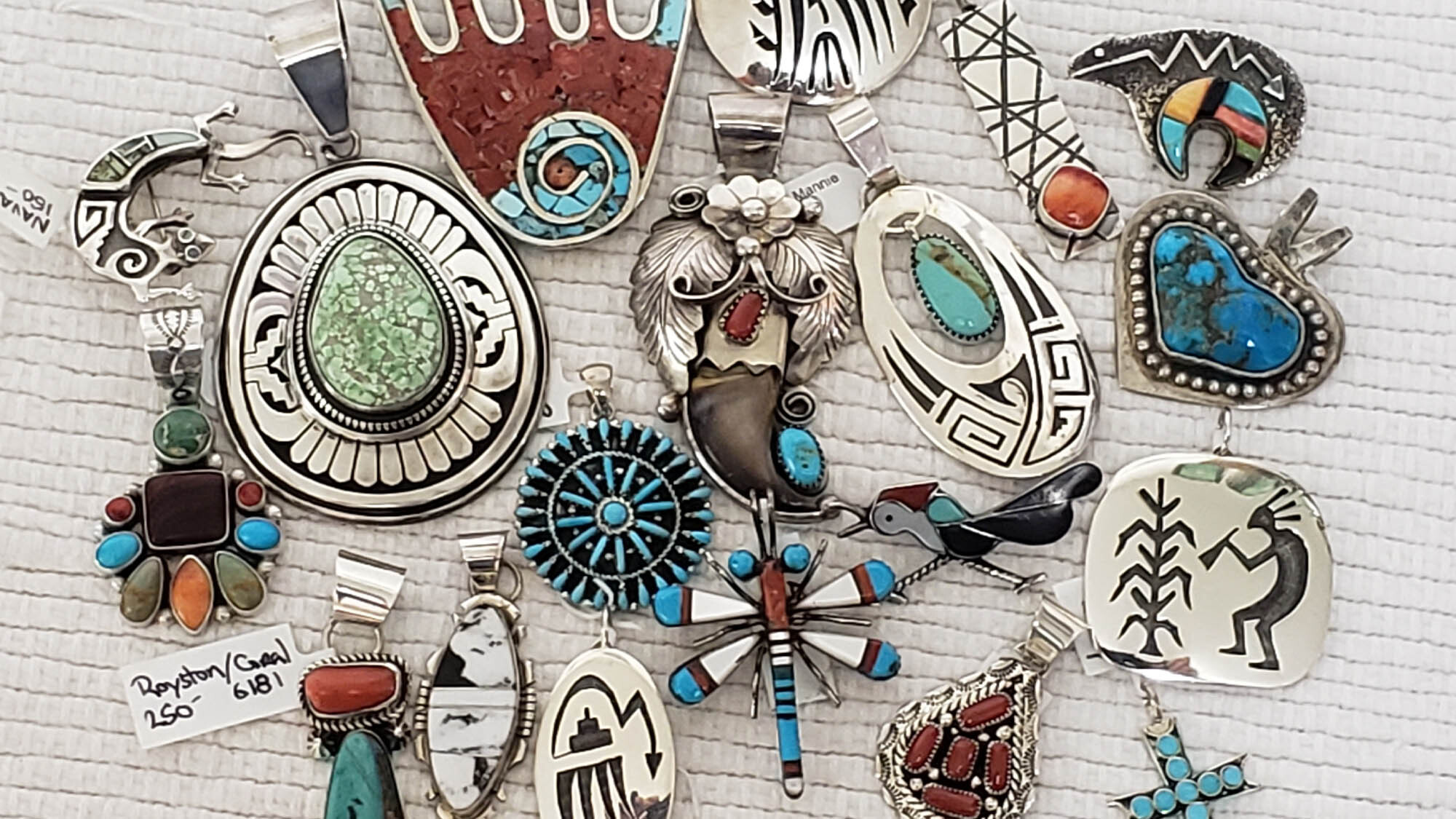
Forged in Tradition, Set in Spirit: Unveiling the Masterful Techniques of Native American Tribal Jewelry
Native American tribal jewelry is far more than mere adornment; it is a vibrant narrative woven in silver and stone, a profound expression of culture, spirituality, and identity. Each intricate piece, from the bold cuffs of the Navajo to the delicate mosaic inlays of the Zuni, embodies centuries of artistic evolution, passed down through generations. To truly appreciate this art form is to understand the meticulous, often labor-intensive, traditional metalwork and stone-setting methods that transform raw materials into wearable masterpieces. This article delves into these ancestral techniques, exploring the tools, processes, and philosophies that define this enduring craft.
The Genesis of Metalwork: From Trade to Craft
While Native American communities had long utilized natural materials like shell, bone, wood, and turquoise for adornment, the art of metalworking, particularly silversmithing, was introduced later. The arrival of the Spanish in the American Southwest in the 17th century brought with it European metalworking traditions, primarily iron and copper. However, it was the mid-19th century, following contact with Mexican plateros (silversmiths) and the acquisition of silver coins, that the Navajo (Diné) people truly embraced and revolutionized the craft.
Atsidi Sani, often cited as the first Navajo silversmith, learned the trade around 1850 from a Mexican smith named Nakai Tsosi. He quickly adapted the techniques, initially melting down Mexican pesos and American silver dollars to create utilitarian items like conchos, bridle parts, and buttons. From these humble beginnings, Navajo silversmithing blossomed, laying the groundwork for many of the techniques we associate with Southwestern jewelry today. Other Pueblo tribes, like the Zuni and Hopi, soon followed suit, each developing their distinct styles and technical specializations.
Traditional Metalwork: Shaping Silver with Fire and Hammer

The primary metal for traditional Native American jewelry is sterling silver, valued for its malleability and lustrous finish. The metalwork process begins with transforming raw silver ingots or melted scrap into workable sheets or wires.
1. Melting and Pouring:
Historically, silver was melted in small crucibles, often made from clay or cast iron, over a wood or charcoal fire, with bellows used to intensify the heat. Once molten, the silver was poured into a simple mold, typically made of sandstone or tufa (a porous volcanic rock), to form an ingot. This initial pouring step is critical, as any impurities or inconsistencies can affect the final product.
2. Tufa Casting: A Distinctive Technique:
Tufa casting is perhaps one of the most unique and iconic Native American metalworking techniques, particularly associated with the Navajo. It involves carving a design into two halves of a tufa stone mold. The porous nature of tufa not only allows gases to escape during pouring, preventing bubbles, but also imparts a distinctive, slightly textured, matte finish to the cast silver. This texture, often described as "sandy," is highly prized and cannot be replicated by modern smooth molds. The process is labor-intensive: the artisan carefully carves the design (often using chisels, files, and even sharpened nails), then clamps the two halves together, pours molten silver into a sprue, and waits for it to cool. Once cooled, the mold is broken open to reveal the cast piece, which then requires extensive filing, grinding, and polishing. Each tufa mold can only be used a limited number of times before it deteriorates, making each piece cast from it truly unique.
3. Forging and Hammering:
Once an ingot is formed, it must be reduced to the desired thickness and shape. This is achieved through a combination of forging and rolling. Traditionally, artisans used various hammers and anvils. The rhythmic clink of hammer on metal is a fundamental sound of the workshop. Hammering not only shapes the metal but also work-hardens it, making it stronger. As the silver becomes harder, it needs to be "annealed" – heated to a dull red glow and then cooled – to restore its malleability, allowing further shaping without cracking. This cycle of hammering and annealing is repeated until the desired thickness and form are achieved. For intricate pieces, the silver might be drawn through a drawplate to create wires of various gauges.
4. Stamping and Chasing:
Decorative elements are often applied using stamping and chasing techniques. Stamping involves using small, hand-forged steel dies (stamps) to impress designs onto the silver. These stamps, often unique to individual smiths or families, depict geometric patterns, celestial bodies, animal tracks, or symbols of protection and fertility. The artisan holds the stamp against the silver and strikes it with a hammer, leaving a crisp impression. Chasing, on the other hand, involves using a chasing hammer and various shaped punches to push the metal from the front, creating raised or incised lines and textures without removing any material. Repoussé, a related technique, pushes the metal from the reverse side to create a raised design on the front. These techniques add depth, texture, and symbolic meaning to the jewelry.

5. Soldering:
Joining separate pieces of silver is accomplished through soldering. Traditional soldering involved using a blowpipe and mouth-blown flame (or later, foot-powered bellows) to heat a small piece of silver solder (an alloy with a lower melting point than sterling silver) placed at the joint. The flux, a paste made of borax and water, prevents oxidation and helps the solder flow smoothly. Precision and control of heat are paramount; too little heat and the solder won’t flow; too much, and the entire piece could melt. Early smiths often used "sweat soldering," where solder was melted onto one surface, then the second piece was placed on top and reheated to create the bond.
Traditional Stone Setting: Embracing the Earth’s Treasures
The true brilliance of Native American jewelry often lies in its masterful use of natural stones, particularly turquoise. The connection to these stones is deeply spiritual, with each color and type carrying specific meanings and powers.
1. The Reign of Turquoise:
Turquoise, often called "sky stone" or "stone of heaven," holds immense cultural and spiritual significance for many Southwestern tribes. It is believed to bring good fortune, protection, strength, and health. The value of turquoise depends on its color (from sky blue to deep green), hardness, and the presence and character of its matrix (the host rock, often black, brown, or gold veins). Other popular stones include coral (for healing and protection), jet (for protection and grounding), mother-of-pearl (for peace and calm), abalone shell (for emotional balance), and more recently, lapis lazuli and onyx.
2. Cabochon Cutting:
Most stones used in traditional Native American jewelry are cut and polished into cabochons – smooth, dome-shaped stones with a flat back. This allows the natural beauty and color of the stone to be the focal point. Artisans would historically use hand-powered grinding wheels, often with water as a coolant, and various grades of abrasive sands or powders to shape and polish the stones to a brilliant sheen. The skill lies in maximizing the stone’s beauty while minimizing waste.
3. Bezel Setting: The Cornerstone Technique:
The most common and fundamental method of securing a stone is the bezel setting. A bezel is a strip of metal, usually silver, that is precisely shaped to fit around the perimeter of the cabochon.
The process involves:
- Cutting and Shaping the Bezel Strip: A narrow strip of silver, often with a serrated edge for added decorative detail (especially common in Navajo and Zuni work), is cut to the exact length needed to encircle the stone.
- Soldering the Bezel: The ends of the bezel strip are soldered together to form a ring.
- Fitting the Stone: The bezel is then carefully filed and shaped to ensure a snug fit around the stone, allowing for slight overlap.
- Soldering to the Base: The bezel is soldered onto a silver backing plate or the main body of the jewelry piece.
- Setting the Stone: Once the soldering is complete and the piece is cleaned, the stone is placed into the bezel. The artisan then uses specialized tools, often a bezel pusher or burnisher, to gently push the metal edge of the bezel over the girdle (the widest part) of the stone, securing it firmly in place. This requires a delicate touch to avoid cracking the stone.
4. Inlay Techniques: Mosaic and Channel:
Inlay work, particularly prominent among the Zuni and Hopi, takes stone setting to another level of complexity and artistry.
-
Mosaic Inlay: This technique involves cutting various pieces of stone, shell, and other materials (like jet or coral) into precise shapes and fitting them together like a jigsaw puzzle to create a design. The individual pieces are then glued onto a silver backing, and the entire surface is ground down and polished smooth, creating a flush, continuous surface. This method allows for intricate pictorial representations, often featuring figures, animals, or katsinas.
-
Channel Inlay: In channel inlay, thin strips of silver are soldered onto a silver backing to create compartments or "channels." Each compartment is then meticulously filled with precisely cut pieces of stone, shell, or other materials. The stones are carefully ground and polished to be flush with the silver channels, creating a smooth, uninterrupted surface where the silver lines become part of the design. This technique is often used for geometric patterns or linear designs and requires exceptional precision in both metalwork and lapidary.
5. Heishi: The Art of Beading:
While not strictly "stone setting," heishi (from the Keresan word for "shell") is an ancient and crucial Native American jewelry technique, particularly of the Pueblo tribes. It involves creating small, disk-shaped beads from natural materials like shell, turquoise, jet, or coral. These materials are painstakingly cut, drilled, strung on a wire, and then ground down and polished while still on the string, forming smooth, uniform beads. The resulting strands are then used for necklaces, bracelets, or as components in more complex pieces. The creation of a single heishi necklace can take hundreds of hours, a testament to the artisan’s patience and skill.
Tools of the Trade: Simplicity and Ingenuity
Traditional Native American jewelers worked with a surprisingly simple array of tools, many of which were handmade or adapted from other purposes. Essential tools included various hammers (for forging, stamping, chasing), anvils (often a railroad track section or a large, smooth stone), files (for shaping and refining metal), shears (for cutting silver sheets), blowpipes (for soldering), crucibles, and an assortment of punches and dies. For stone work, lapidary wheels (hand-cranked or foot-powered) and various abrasives were crucial. The efficacy of these simple tools underscored the profound skill and experience of the artisan; it was not the sophistication of the tool, but the mastery of its wielder, that produced such exquisite results.
The Enduring Legacy: Art, Spirit, and Identity
The techniques of traditional Native American tribal jewelry are more than just mechanical processes; they are an embodiment of cultural values, spiritual beliefs, and a profound connection to the land and its resources. Each design, each stone, each hammered curve carries a narrative – a prayer, a blessing, a historical account, or a symbol of identity. The painstaking labor involved is a form of meditation, a communion with the materials and the ancestral spirits who guided the hands of past artisans.
Today, while modern tools and techniques have certainly entered the workshops of many Native American jewelers, the core principles and traditional methods continue to be revered and practiced. The distinct textures of tufa casting, the bold impressions of hand-stamped silver, the meticulous precision of inlay work, and the spiritual resonance of turquoise remain the hallmarks of authentic Native American tribal jewelry. These pieces are not merely commodities; they are living testaments to an enduring artistic heritage, passed from generation to generation, ensuring that the echoes in silver and stone continue to tell their vital stories for centuries to come.